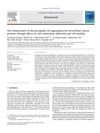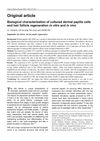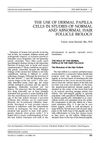TLDR Human mesenchymal stem cells can become dermal papilla cells, aiding hair growth.
The study demonstrated that human mesenchymal stem cells (hMSCs) had the potential to differentiate into dermal papilla (DP) cells both in vivo and in vitro. By co-culturing hMSCs with DP cells, researchers observed an increase in the expression of markers such as versican, CD133, SCF, ET-1, and bFGF, indicating successful differentiation. Additionally, the number of cell aggregates increased when hMSCs were co-cultured with DP cells compared to when they were cultured alone. The expression of HLA-I was specifically noted in the DP of newly formed hair follicles, supporting the potential of hMSCs to contribute to hair follicle formation and maintenance.
6 citations
,
February 2010 in “Biotechnology and bioprocess engineering” Using umbilical cord stem cells can help create hair-growing tissues more affordably.
 44 citations
,
June 2009 in “Biomaterials”
44 citations
,
June 2009 in “Biomaterials” Skin cell clumping for hair growth is improved by a protein called fibronectin, which helps cells stick and move better.
34 citations
,
March 2009 in “British journal of dermatology/British journal of dermatology, Supplement” Vitamin C derivative helps hair grow longer by making cells produce a growth factor through a specific cellular pathway.
 24 citations
,
February 2006 in “Chinese Medical Journal”
24 citations
,
February 2006 in “Chinese Medical Journal” Cultured dermal papilla cells can regenerate hair follicles and sustain hair growth.
 88 citations
,
May 2005 in “Journal of Dermatological Science”
88 citations
,
May 2005 in “Journal of Dermatological Science” Versican, a protein, is less present in thinning hair follicles and this decrease might contribute to common hair loss in men.
 57 citations
,
November 1998 in “Wound Repair and Regeneration”
57 citations
,
November 1998 in “Wound Repair and Regeneration” Hair papilla cells can create and regenerate hair bulbs under the right conditions.
 19 citations
,
October 1996 in “Dermatologic Clinics”
19 citations
,
October 1996 in “Dermatologic Clinics” Dermal papilla cells are key for hair growth and could help us understand and treat hair loss.




